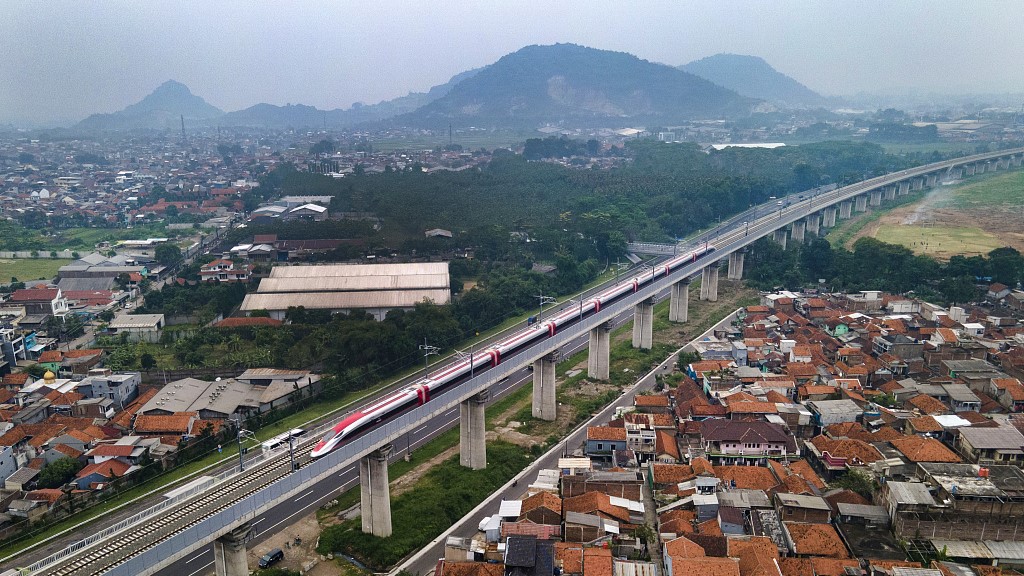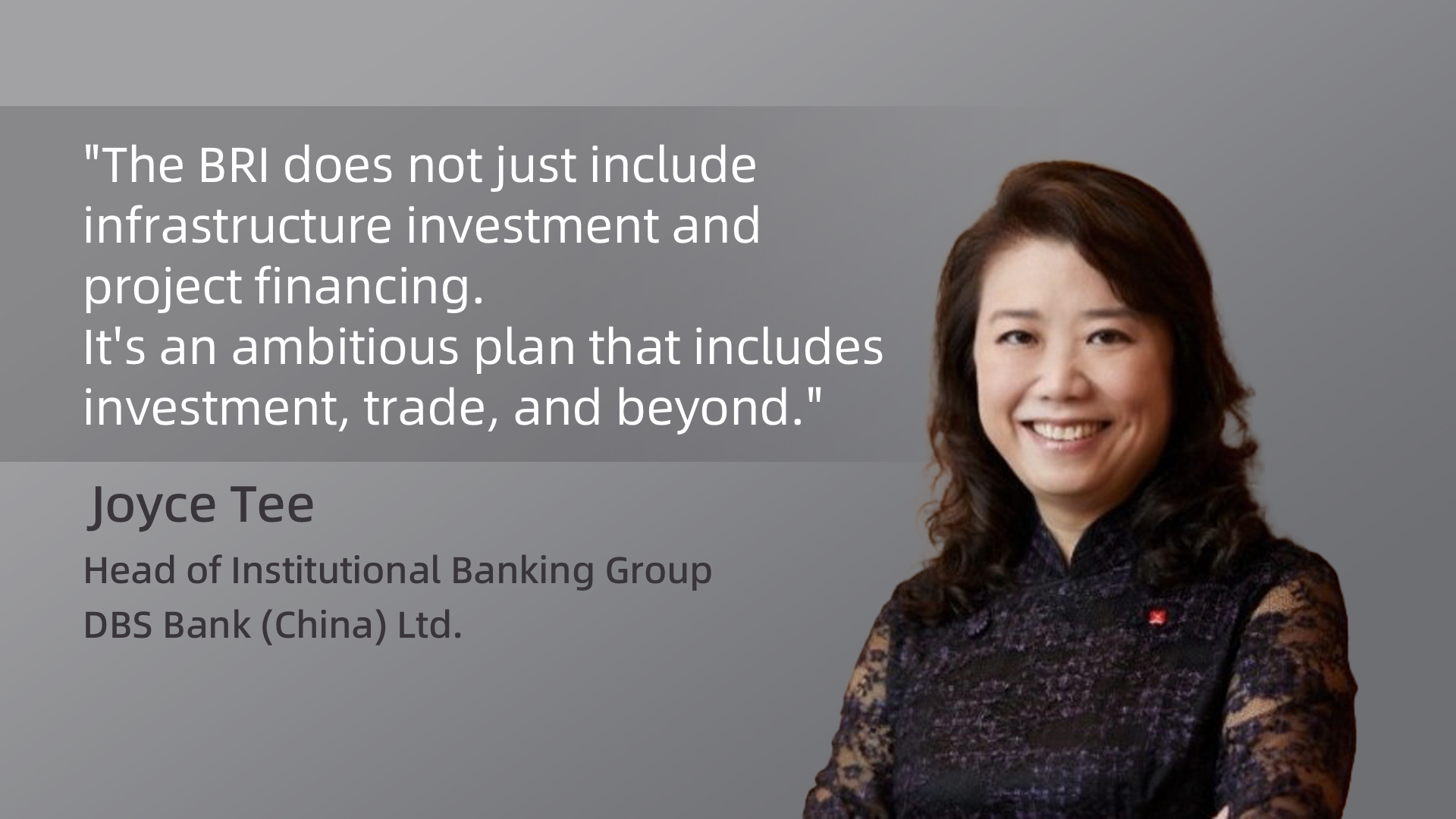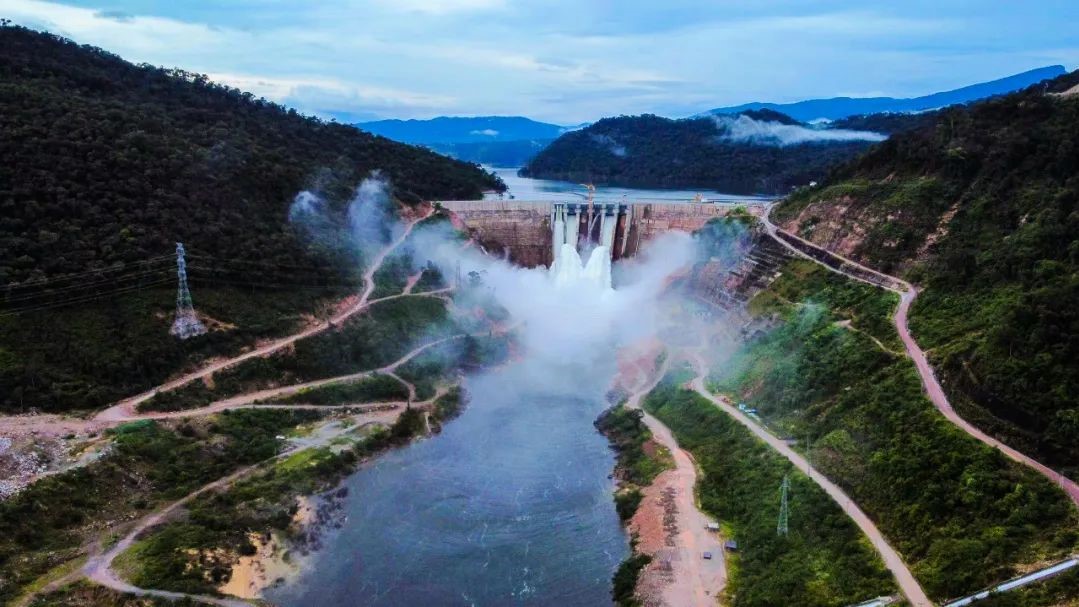
A bird's-eye view of the Jakarta-Bandung High-Speed Railway, Indonesia, May 19, 2023. /CFP
A bird's-eye view of the Jakarta-Bandung High-Speed Railway, Indonesia, May 19, 2023. /CFP
It has been a decade since the Belt and Road Initiative (BRI) was introduced, successfully enabling much-needed infrastructure development in participating nations.
And local small and medium-sized enterprises (SMEs) benefit from megaprojects along the BRI route, Joyce Tee, the new head of Institutional Banking Group at DBS Bank China, said in an exclusive interview with CGTN.
As the largest bank in Southeast Asia, DBS has built business networks in over 70 percent of the markets along the BRI.
The veteran banker specializing in SME businesses in DBS' Singapore headquarters before taking up her current post in China said that while larger corporations have the privilege of receiving loans at favorable rates due to their good credit standing, their local associates may consist of small and medium-sized enterprises (SMEs) that could find it hard to obtain credit.
But if they partnered up, and DBS knows their trade is secure, the bank can offer SMEs cheaper loans. This leads to a win-win deal where the lower financing cost results in a cheaper product.
"I think that the BRI is more than China's opening-up, China actually wants to help the Asian community in this," said Tee.
She gave the nod to an analogy of building a dam where the builder is a Chinese state enterprise, and the SME is a local cement supplier. In this scenario, the supplier can take out a loan at a lower rate when trading between the two.

Graphic designer: CGTN's Liu Yang
Graphic designer: CGTN's Liu Yang
The massive projects are the most visible evidence of achievements in a project, but Tee emphasized that the SMEs, seen as the backbone of the world's economies, are an integral component to the success of the BRI.
Before the COVID-19 pandemic, the World Bank estimated that the BRI transport project, including tunnels and high-speed railways, could increase trade by up to 9.7 percent and boost residents' income by 3.4 percent in the region.
Stronger ties with ASEAN
Association of Southeast Asian Nations (ASEAN) has become "a strong pivot point" for China's dual circulation development pattern, said Tee. The China-ASEAN trade volume hit 6.5 trillion yuan ($970 billion) in 2022 with a growth rate of 15 percent, far exceeding trade volumes with other trading partners, including the European Union and the U.S.
One of the areas of focus for China is renewable energy. With ASEAN countries having considerable renewable energy reserves in solar, wind, and hydropower, China, as a global leader in renewable energy technology, can collaborate with these countries to export industrial technology and increase green energy supply, according to Tee.

The Nam Ngiep 1 hydropower station in Laos. /Power Construction Corporation of China
The Nam Ngiep 1 hydropower station in Laos. /Power Construction Corporation of China
The Regional Comprehensive Economic Partnership (RCEP), which officially came into effect last year, has opened up a new chapter for regional trade and economic ties, with more investments from China expected to flow into ASEAN countries, particularly in the areas of manufacturing, e-commerce, and green technology, she added.
'Renminbi usage is a vote of confidence'
The increase in trade between China and ASEAN countries is leading to the use of the Chinese yuan, or renminbi, as the currency of choice for settlement. Data in 2022 showed that China-ASEAN settlement in yuan surged nearly 20-fold in a decade.
The fast-increasing market acceptance for cross-border trade settlement and investment in yuan reflects confidence in China's current economic strength and future economic growth, Tee told CGTN.
She added that the result of the Russia-Ukraine crisis has seen more countries looking to diversify their reserves away from the U.S. dollar, and to look to Chinese yuan as an alternative currency to hedge risk.
Data from Bloomberg Intelligence showed that the renminbi's share in China's cross-border payments and receipts overtook that of the U.S. dollar for the first time in March.
Green investment meets hurdles
Low-carbon investment continues to be a crucial part of the battle against climate change. However, virtue is not always in line with profitability. Tee noted that unlike large enterprises, SMEs prioritize survival.
A survey conducted by DBS reveals that 85 percent of mid-sized firms and 75 percent of small firms list environmental, social, and governance (ESG) as their top priority. However, only 37 percent have a clear plan on how to achieve their goals.
The energy security concerns stemming from the Russia-Ukraine crisis have also cooled enthusiasm for sustainable investing for the time being. However, the need for long-term commitment is as crucial as ever.
According to Tee, movies about Wong Fei-hung, a legendary figure in kung fu and Chinese medicine, provide a useful analogy: Western medicine was used in the movie during times of emergencies, despite their known side effects, instead of traditional Chinese medicine like acupuncture, known for its long-term benefits.
In much the same way, she said, investors will take care of immediate needs but with long-term carbon reduction as an overall direction.
China has committed to peak carbon emissions in 2030 and become carbon neutral by 2060.
Tee believes that the low-carbon transition will be a long process that requires strong government-led action and collective efforts from society, but it is an inevitable road forward.